Welcome, cheese enthusiasts, to the heartland of dairy delights! Today, we’re taking you on a cheesy journey through the rolling hills and picturesque landscapes of Wisconsin, fondly known as “America’s Dairyland”. Grab your cheese knives and get ready to explore the history of cheesemaking in Wisconsin – a tale as rich and diverse as the cheeses themselves!
SEE ALSO: The best cheese destinations around the world that you need to add to your bucket list →
Why is Wisconsin called America’s Dairyland?
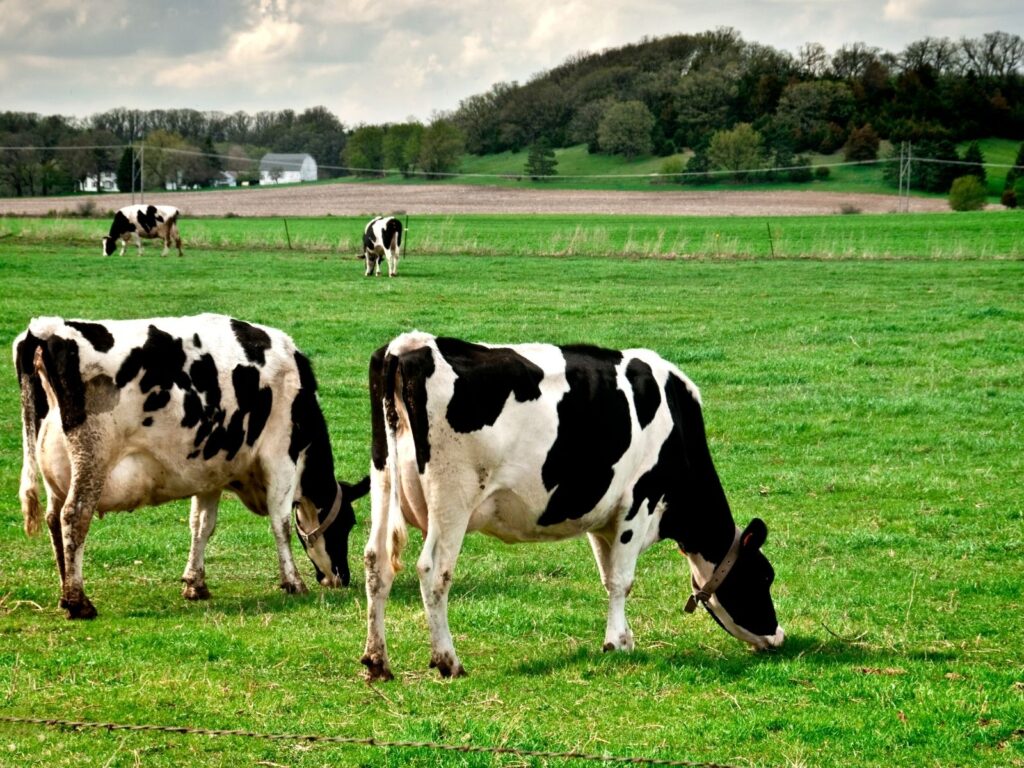
Picture rolling green fields, contented cows grazing lazily, and the sweet scent of fresh milk in the air. Welcome to Wisconsin, affectionately known as “America’s Dairyland”!
But why exactly did this charming state earn such a cheesy moniker?
Abundant dairy farms
Wisconsin’s landscape is a patchwork of dairy farms. With over 1.2 million dairy cows spread across the state, Wisconsin boasts one of the highest numbers of dairy farms in the United States. These farms produce an abundance of milk, making dairy farming a vital part of Wisconsin’s agricultural heritage.
Tradition and heritage
Wisconsin’s dairy legacy dates back to the 19th century when European immigrants settled in the state. These settlers brought with them their expertise in cheesemaking and a deep love for dairy farming.
Over generations, this knowledge and passion for dairy farming became ingrained in Wisconsin’s cultural identity.
Cheesemaking prowess
Wisconsin doesn’t just produce milk; it crafts world-class cheese. The state is renowned for its diverse cheese varieties, from the classic Cheddar to unique artisanal creations.
Wisconsin cheeses have consistently earned acclaim at national and international competitions, cementing the state’s reputation as a cheesemaking powerhouse.
Economic impact
The dairy industry plays a significant role in Wisconsin’s economy. It provides jobs, supports local businesses and contributes billions of dollars to the state’s economy each year.
Actually, the economic impact of dairy farming and cheese production is so substantial that it has become a defining feature of Wisconsin’s economic landscape.
Cultural significance
Beyond economics, dairy farming is deeply woven into Wisconsin’s cultural fabric. The state celebrates its dairy heritage through events like county fairs, dairy festivals and even a designated Dairy Month.
The pride Wisconsinites take in their dairy industry further solidifies the state’s identity as America’s Dairyland.
Preservation efforts
Wisconsin’s commitment to preserving its dairy traditions also plays a role in the “America’s Dairyland” title. Various organisations and initiatives in the state work tirelessly to promote sustainable farming practices, ensuring that Wisconsin’s dairy industry continues to thrive for generations to come.
History of cheesemaking in Wisconsin
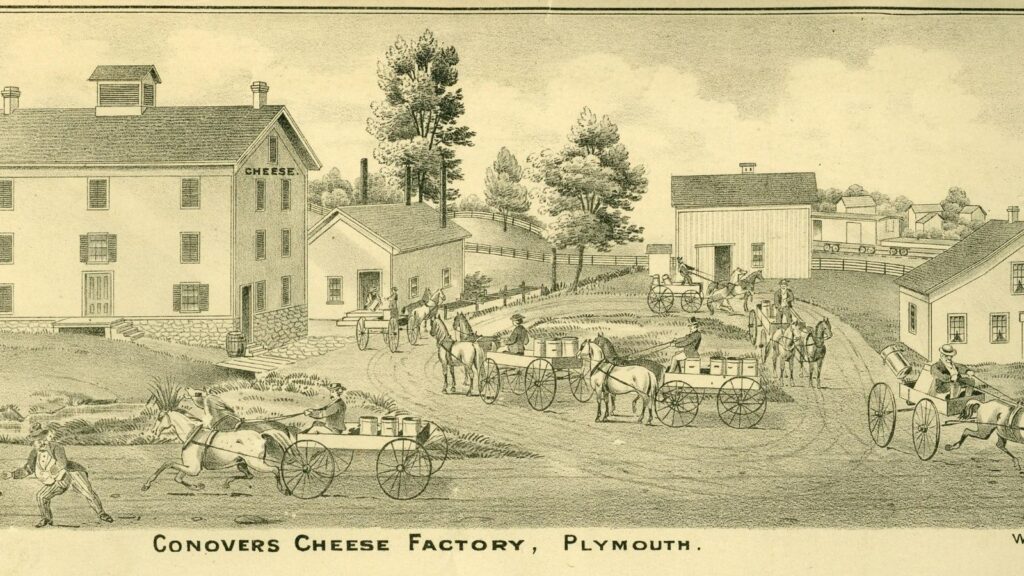
Wisconsin’s transformation into the cheese capital of the United States is a tale that spans centuries. And it is marked by passion, innovation and a deep-rooted connection to the land.
Let’s travel back in time and explore the fascinating history of cheesemaking in this dairy-rich state.
Humble beginnings (early 1800s)
In the early days of Wisconsin’s dairy industry, cheese emerged as a practical solution for farmers dealing with limited storage and transportation options.
Charles Rockwell, one of the state’s pioneering cheesemakers, kickstarted commercial cheese production in 1837 near Fort Atkinson. Around the same time, Anne Pickett established a cheese factory in Lake Mills in 1841, utilising milk from neighbouring farms.
A growing industry riddled with inconsistencies (1840s)
During the 1840s, as farmers began focusing on improving their herds, cheesemakers also honed their craft. However, the methods of cheese production varied greatly among producers, resulting in inconsistent taste and quality.
Selling cheese beyond state borders (1850s)
In the 1850s, experts started educating farmers about the significance of temperature control and proper storage, although the demand for specialised dairy products was limited locally.
The interest in dairy farming fluctuated with the wheat market: as wheat production declined, more farmers turned to dairy. While most cheese was still made on individual farms, J.I. Smith of Sheboygan County became an early exception.
In 1858, Smith obtained the state’s first cheese vat and successfully marketed his cheese outside the state, shipping barrels to Chicago.
Shifting from farmstead to factory production (late 1800s)
A transformative period for Wisconsin’s dairy industry occurred between 1860 and 1890 when the demand for dairy products surged, prompting a shift from farmstead production to factory-based methods.
Factory cheesemaking was pioneered by immigrants from New York, with Chester Hazen opening one of the first true cheese factories in Fond du Lac County in 1864. By the end of the Civil War, Wisconsin boasted 30 cheese factories, growing to 54 by 1870.
By the 1880s, cheese production became concentrated in counties like Sheboygan, Green and Jefferson. Moreover, the cheese from Sheboygan County found markets abroad, notably in England and New York.
Wisconsin’s immigrant communities played a crucial role in diversifying the state’s cheese repertoire. Swiss immigrants introduced Swiss cheese, Italians brought Mozzarella, Provolone and Gorgonzola.
Soon after, the French contributed Camembert, Brie, and various blue cheeses, and the Germans introduced Muenster and Limburger. Finally, English migrants started making Cheddar and Dutch immigrants made Gouda and Edam.
Around the same time, Wisconsin cheesemakers developed unique varieties such as Brick and Colby. We’ll get back to those a little bit later.
The late 1800s also saw the establishment of dairy cooperatives, where farmers pooled their resources to build cheese factories. These cooperatives not only provided a solution to the surplus milk but also standardised cheese production, ensuring consistent quality. And the most famous of those organisations was the Wisconsin Dairyman’s Association.
Wisconsin becomes a cheesemaking powerhouse (early 1900s)
By the 1920s, Wisconsin was home to over 2,800 cheese factories, solidifying its reputation as a cheese-producing powerhouse. In 1921, Wisconsin made history by becoming the first state to implement a grading system for cheese, ensuring quality and setting a standard that would shape the state’s cheese industry for years to come.
In the early 20th century, Cheddar cheese emerged as a star player in Wisconsin’s cheese scene. Cheddar was easy to make, age-resistant and transportable – making it ideal for both local consumption and national distribution.
The production of Cheddar skyrocketed, shaping Wisconsin’s reputation as a leading cheese producer.
Innovation and diversification (Mid to late 1900s)
Post-World War II, advancements in technology revolutionised the cheesemaking process. Automation and refrigeration led to increased efficiency and consistency in cheese production.
During this period, Wisconsin cheesemakers also embraced diversification, experimenting with various cheese styles. This innovation gave rise to the production of specialty cheeses, expanding Wisconsin’s offerings beyond Cheddar.
The cult of cheese in Wisconsin

In more recent history, Wisconsin cheeses have gained international acclaim for their quality and diversity. The state consistently won awards at prestigious competitions, solidifying its status as a global cheese powerhouse.
In recent years, Wisconsin’s rich cheesemaking heritage has become a magnet for cheese enthusiasts and tourists alike. Visitors flock to the state to experience cheesemaking tours, tasting events, and cheese-related festivals.
Cheese has become an integral part of Wisconsin’s cultural identity, celebrated through events like the Wisconsin State Fair and the Green County Cheese Days.
Today, Wisconsin stands at the pinnacle of cheese production in the United States. Its history, marked by tradition, innovation, and a deep love for dairy, continues to shape the state’s cheese-making landscape.
Each slice of Wisconsin cheese carries within it this remarkable history – a testament to the passion and dedication of generations of cheesemakers in America’s Dairyland.
Wisconsin: Home of the Cheeseheads

Wisconsinites proudly wear the title of “Cheeseheads” as a badge of honour, but the story behind this affectionate nickname is as unique and charming as the people it represents.
A symbol of dairy heritage
Wisconsin has been a leader in the cheese industry for generations, producing a staggering variety of cheese types. This rich history naturally led to the people of Wisconsin being associated with cheese.
A sporting origin
The term “Cheesehead” gained widespread recognition in the sports arena. In 1987, during a Milwaukee Brewers baseball game, one fan donned a cheese-shaped hat made of cardboard to show her support for the team.
These quirky, cheese-shaped hats captured the attention of the media and fans alike, becoming a symbol of Wisconsin sports enthusiasm.
Embracing the nickname
Rather than shying away from this playful moniker, Wisconsinites embraced it with open arms. The Cheesehead hat became an iconic symbol, not just in sports stadiums but also at cultural events, festivals, and, of course, cheese-related celebrations.
It embodies the state’s sense of pride, community, and, most importantly, a good sense of humour. As a matter of fact, the term has now become a nickname for the fans of the state’s hugely popular football team, the Green Bay Packers.
A cultural phenomenon
The Cheesehead phenomenon transcended sports and became a cultural symbol representing Wisconsin’s friendly, cheese-loving spirit. It’s not just a hat; it’s a testament to the state’s agricultural heritage and the people’s enduring affection for cheese.
Wisconsinites wear the title “Cheeseheads” with a sense of camaraderie and a light-hearted acknowledgment of their state’s delicious claim to fame.
The Wisconsin terroir
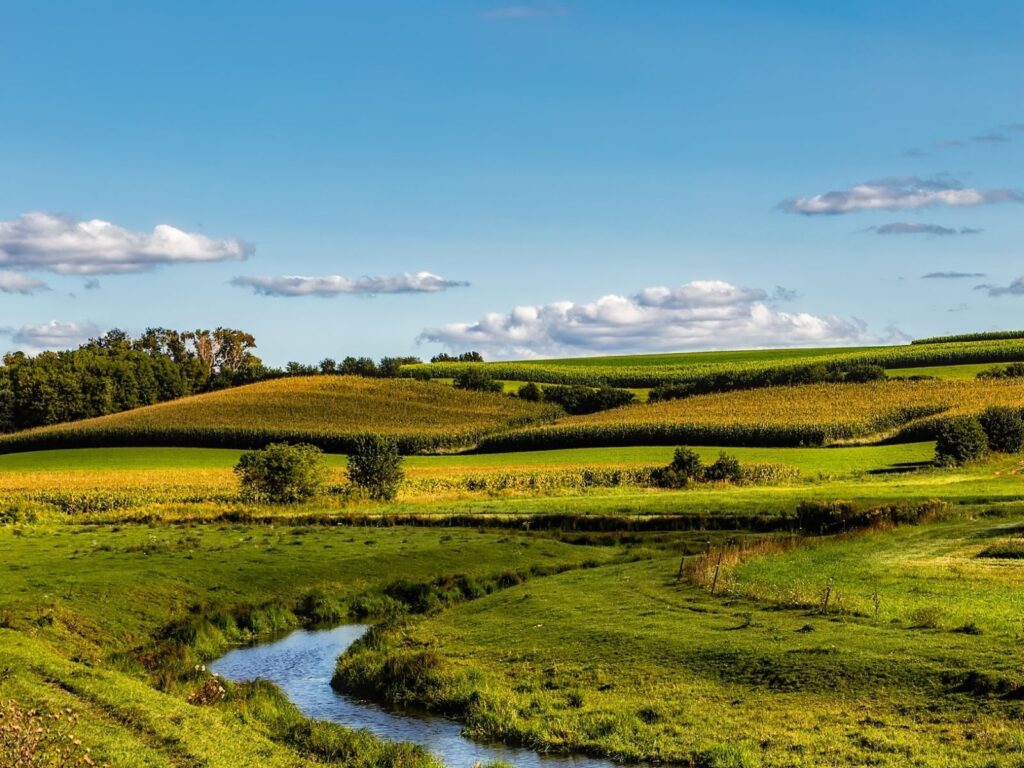
Terroir, a term often associated with wine, encapsulates the unique environmental factors that influence the taste and quality of agricultural products. While typically used in the context of grapes and winemaking, the concept of terroir is equally applicable to cheese and other agricultural products, including those of Wisconsin.
Wisconsin’s terroir, shaped by its geography, climate, soil and traditions, plays a pivotal role in creating the distinctive flavours found in the state’s dairy products.
Geography
Nestled in the heart of the Midwest, Wisconsin’s diverse geography ranges from rolling hills and fertile plains to abundant water bodies. The state’s proximity to the Great Lakes provides a moderating effect on the climate, ensuring that the temperature and humidity levels are conducive to dairy farming.
Moreover, the variation in landscapes means different regions of the state have unique soil compositions and microclimates, influencing the flora and fauna that thrive there.
Climate
Wisconsin experiences all four seasons distinctly, with cold winters, warm summers and ample rainfall. This seasonal variation impacts the diet of dairy animals, affecting the taste and composition of milk.
The lush pastures during the warmer months contribute to the rich and varied flavours found in Wisconsin cheeses. As dairy cows graze on a diverse array of grasses, herbs and wildflowers, those flavours express in their milk, and the cheeses made with it.
Soil
The soil composition in different parts of Wisconsin varies, ranging from sandy loam to rich, fertile soils. These soil differences influence the types of vegetation that grow, which in turn affects the flavour profile of the milk.
Of course, nutrient-rich soils contribute to healthy crops, which are essential for the well-being of dairy animals and the quality of dairy products.
Biodiversity
The biodiversity in Wisconsin, both in terms of plant life and wildlife, contributes to the complexity of the state’s terroir.
Pollinators, natural predators and indigenous plant species create a balanced ecosystem, enhancing the quality of crops and forage. This biodiversity also plays a role in the unique flavours and aromas found in Wisconsin milk and cheeses.
In essence, Wisconsin’s terroir is a harmonious blend of natural elements and human expertise. It shapes the character of the state’s dairy products, giving them a distinctive quality that reflects the land from which they originate.
How much cheese is produced in Wisconsin today?
When it comes to cheese production in the United States, Wisconsin reigns supreme, earning its well-deserved title as the Cheese Capital of the nation.
Wisconsin’s cheese production is nothing short of awe-inspiring. As of 2022, the state was responsible for producing over 3.5 billion pounds (1.6 billion kilograms) of cheese annually. Yes, you read that right – billions of pounds of cheese!
This staggering quantity accounts for nearly 27% of the entire cheese production in the United States. From the classic Cheddar varieties to artisanal creations and innovative new flavours, Wisconsin’s cheese makers craft a diverse array of cheese types to satisfy every palate.
Wisconsin’s finest: An array of famous commercial cheeses
Unsurprisingly, Wisconsin produces a large selection of cheeses that have captivated taste buds far and wide. Let’s explore some of the most popular commercial cheeses that emerge from the cheesemaking traditions of this cheese-loving state.
Cheddar
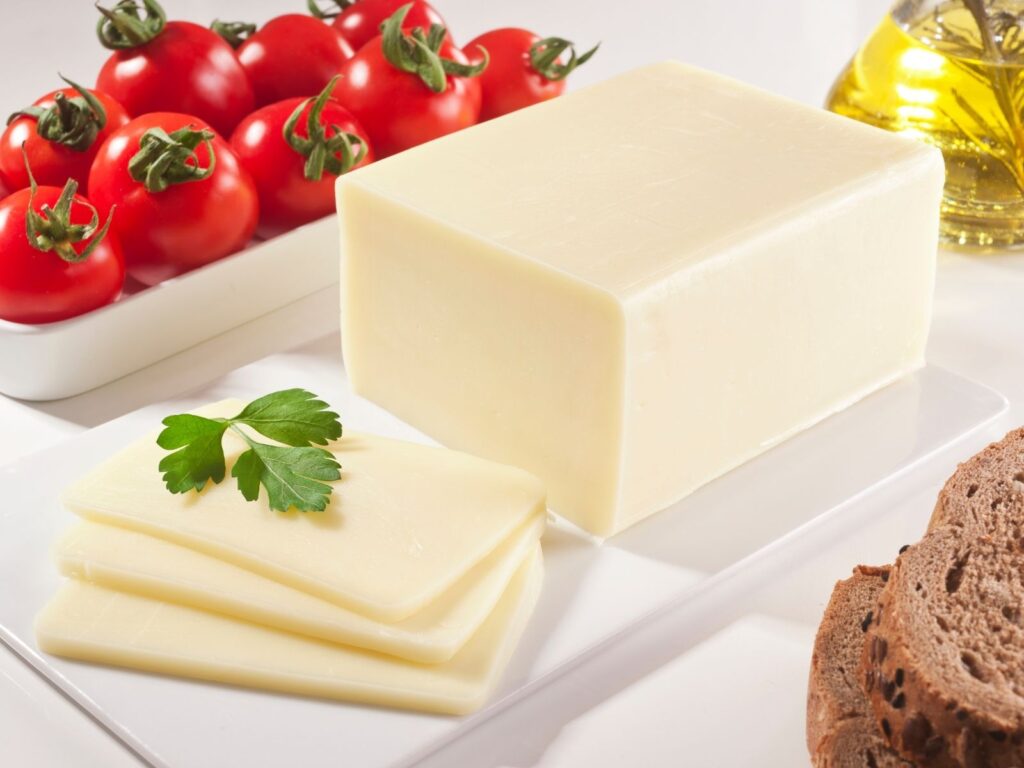
Cheddar, the undisputed king of Wisconsin cheeses, comes in a variety of flavours and ages. From mild and creamy young Cheddars to savoury, crumbly aged versions, Wisconsin Cheddar caters to a wide range of palates.
Furthermore, its versatility makes it a favourite for everything from cheese plates to melting in a gooey Grilled Cheese Sandwich.
Colby
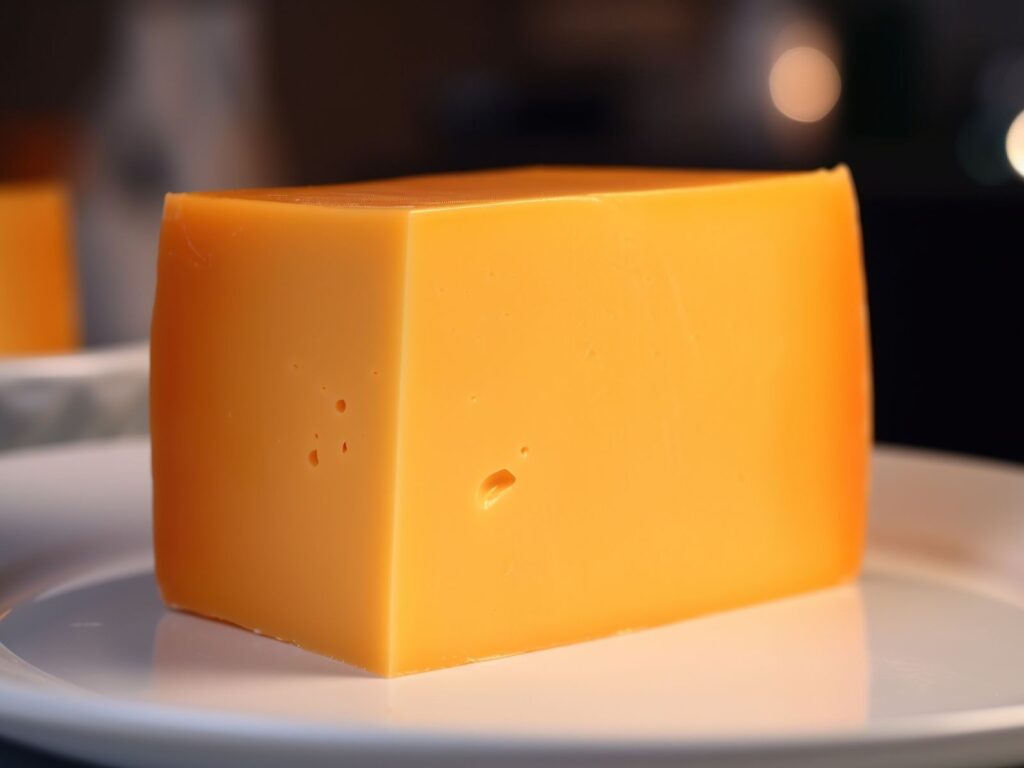
Colby Cheese, named after the town of Colby in Wisconsin where it was first crafted, is a true Wisconsin original with a rich and colourful history. This mild, creamy cheese has become a staple on cheese boards and in kitchens around the world. And its story is deeply rooted in the heart of America’s Dairyland.
In the late 19th century, Colby Cheese emerged as a response to the demand for a milder, moister cheese compared to the traditional Cheddar. Joseph F. Steinwand, a Wisconsin cheesemaker, is credited with the creation of Colby cheese.
Inspired by the methods used to make Cheddar, he introduced a unique technique that retained more moisture in the curds. As a result, he developed a cheese that was softer, more supple and less tangy than Cheddar.
Whether enjoyed on its own, melted in sandwiches, or paired with fruits and crackers, Colby remains a testament to Wisconsin’s cheesemaking expertise.
Brick Cheese
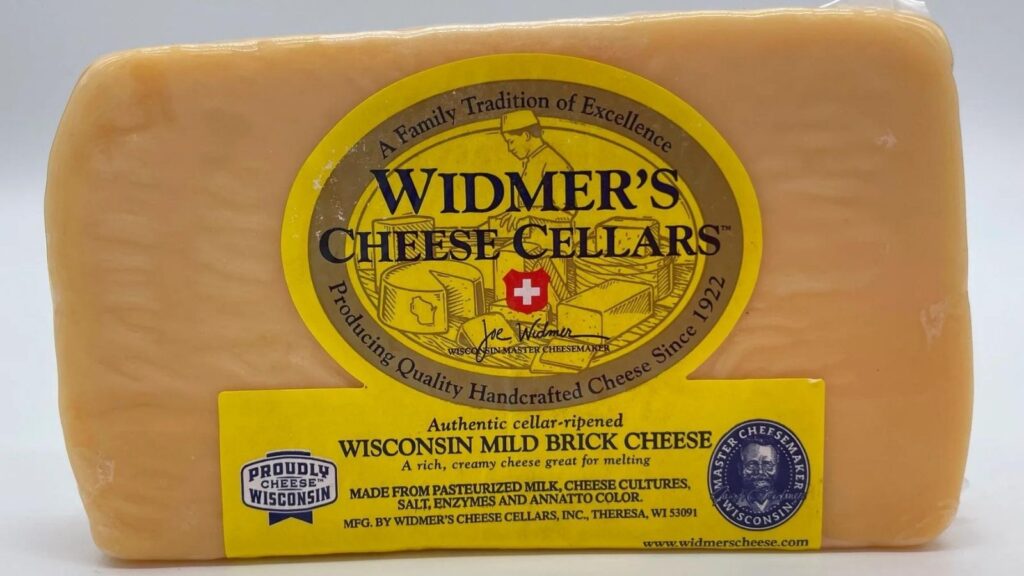
Brick Cheese, another Wisconsin original, was crafted in 1877 by Swiss-born cheesemaker John Jossi. His goal was to create a milder and firmer version of the traditional Limburger cheese. Jossi’s journey began in Wisconsin after managing a small cheese plant in the state.
Later, he moved to New York, where he worked in a larger Limburger plant, refining his ideas for a new cheese variety. His innovation involved reducing the intensity of Limburger’s characteristic flavour and using bricks not only to press the cheese but also to shape it. This gave birth to the distinctive Brick cheese form.
Upon returning to Wisconsin in 1877, Jossi managed a newly established cheese plant, where he implemented his vision and produced the first batches of Brick Cheese. His creation resonated with cheese enthusiasts, leading to the rapid adoption of the Brick recipe.
Today, Brick Cheese is loved for its exceptional melting qualities, making it a top choice for pizzas, burgers and casseroles.
String Cheese
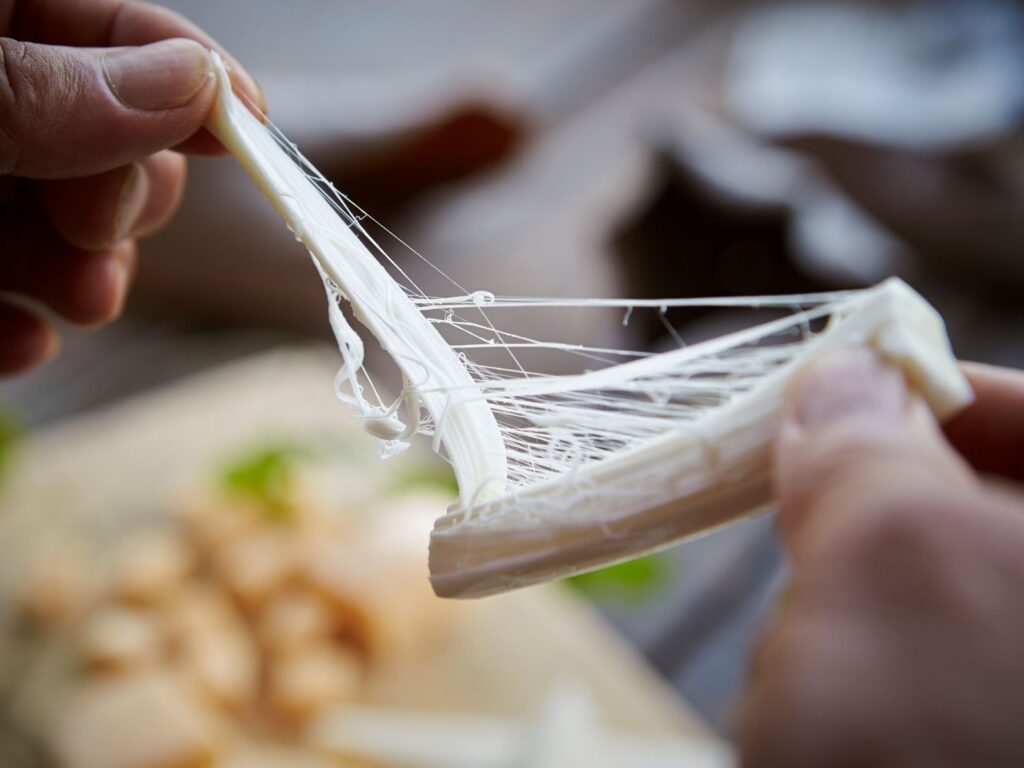
Next, we have String Cheese, a beloved snack enjoyed by people of all ages. While String Cheese itself is not unique to Wisconsin, the state’s cheesemakers have perfected this delightful treat, ensuring a taste that’s simply unmatched.
What makes Wisconsin String Cheese even more special is its connection to Frank Baker, a visionary cheesemaker. In the mid 1900s, Baker revolutionised cheese production by introducing a method to create long, thin strings of Mozzarella.
His innovative approach turned Mozzarella into the peelable, snackable delight we now know as String Cheese. Each peelable strip offers a delightful combination of milky freshness and subtle saltiness, making it a popular choice for school lunches, road trips and quick, satisfying snacks.
Whether you’re peeling it apart one string at a time or savouring it all at once, Wisconsin’s String Cheese carries a hint of history.
Cheese Curds
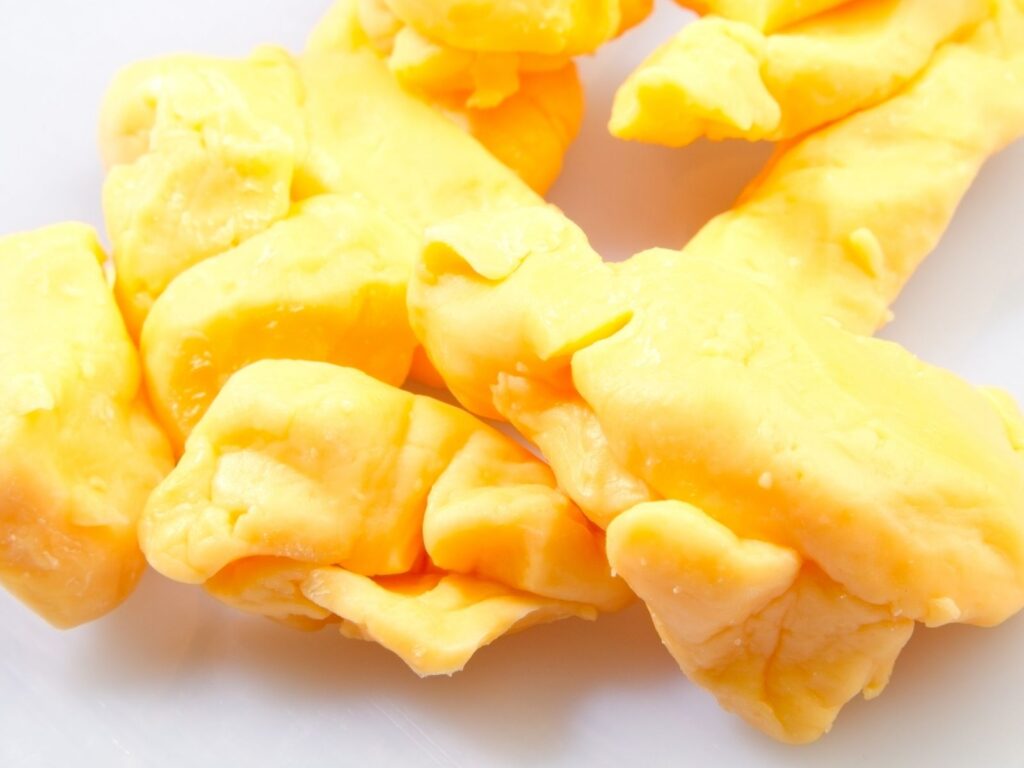
Last but certainly not the least, Cheese Curds are a Wisconsin delicacy, often enjoyed fresh and squeaky. These delightful morsels are young Cheddar pieces that have not undergone the ageing process.
In Wisconsin, Cheese Curds are not just a snack; they’re an institution. Whether enjoyed plain or deep-fried to golden perfection, these curds make their way into various culinary creations. Deep-fried cheese curds, often served with a side of tangy dipping sauce, are a staple at state fairs, local festivals, and sports events.
The crispy exterior gives way to the warm, gooey interior, creating a taste sensation that captures the essence of comfort food.
One of the hallmarks of a perfect Cheese Curd is its characteristic squeak. Young Cheese Curds have a strong, intact protein structure and a robust network of calcium bound to the protein. When you bite into these curds, those structures rub against the enamel in your teeth, making a squeaking sound.
Wisconsinites consider this audible cue a sign of ultimate freshness. As Cheese Curds age, they lose their squeak, making the “squeaky cheese” experience a coveted delight best enjoyed immediately after production.
The Cheese Titans of Wisconsin: Sargento, BelGioioso and Sartori
In the heart of America’s Dairyland, a few names stand out as the titans of the industry. These commercial cheese brands have not only defined the Wisconsin cheese landscape but have also earned nationwide recognition for their exceptional quality and craftsmanship.
Let’s delve into the stories of three cheese giants: Sargento, BelGioioso and Sartori.
Sargento: A legacy of innovation
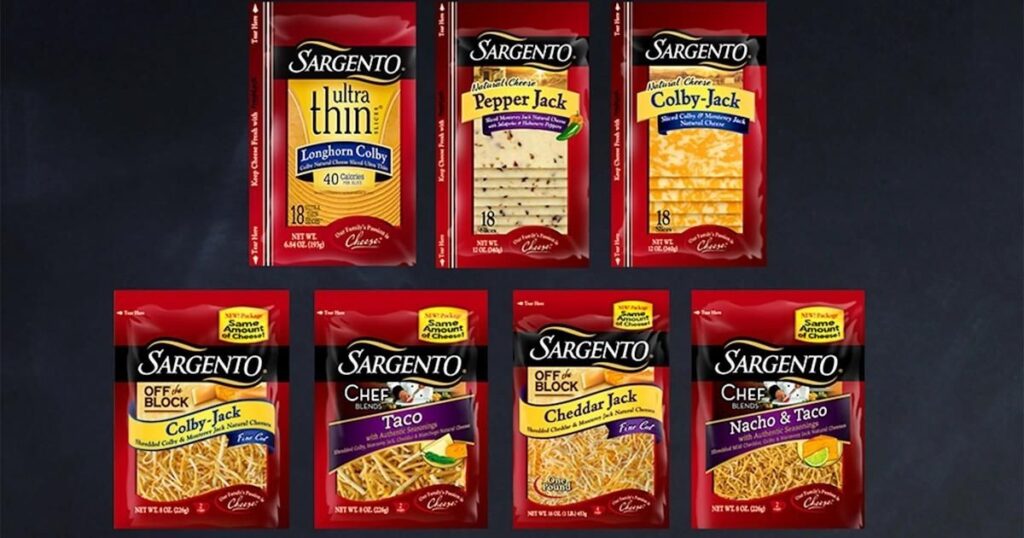
Sargento, headquartered in Plymouth, is a household name synonymous with cheese excellence. Established in 1953, Sargento revolutionised the cheese industry by introducing pre-packaged sliced and shredded cheese. Subsequently, they changed the way consumers enjoyed cheese in their sandwiches and recipes.
Over the years, Sargento has expanded its offerings, producing a diverse range of cheeses, including shredded, sliced and snack varieties. Their commitment to quality and convenience has made them a trusted choice for cheese lovers across the nation. And all their offerings are 100% real cheese, none of that processed stuff!
BelGioioso: Artisan craftsmanship at its finest
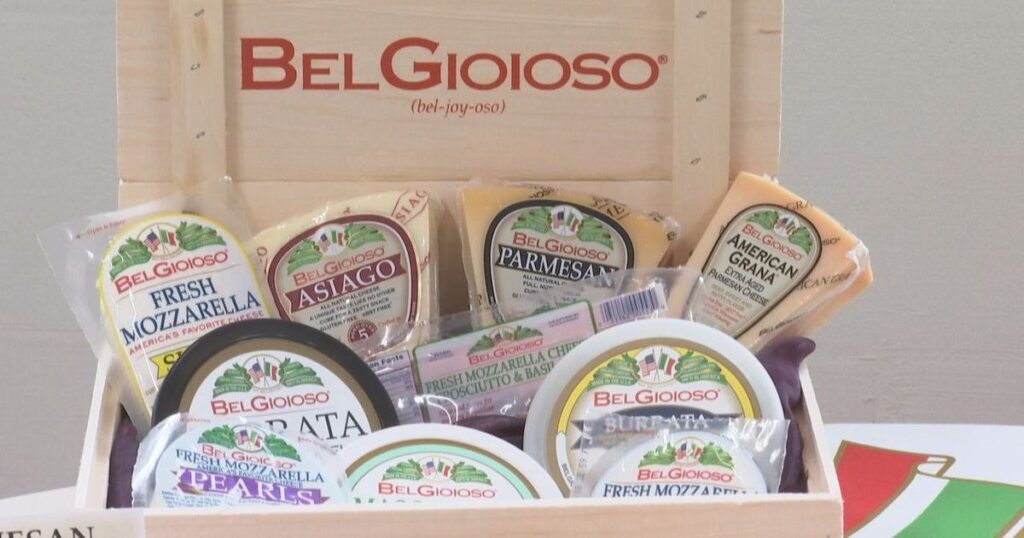
Based in Green Bay, BelGioioso Cheese is renowned for championing the artisanal approach to cheesemaking. Since its founding in 1979, BelGioioso has upheld the Italian tradition of cheesemaking, producing a remarkable array of Italian-style cheeses, such as Provolone, Parmesan and Romano
What sets BelGioioso apart is their dedication to using only natural and fresh ingredients, ensuring the authentic flavours that cheese enthusiasts crave. Their commitment to quality has earned them numerous awards, making BelGioioso a symbol of artisan craftsmanship in the cheese industry.
Sartori: Where tradition meets innovation
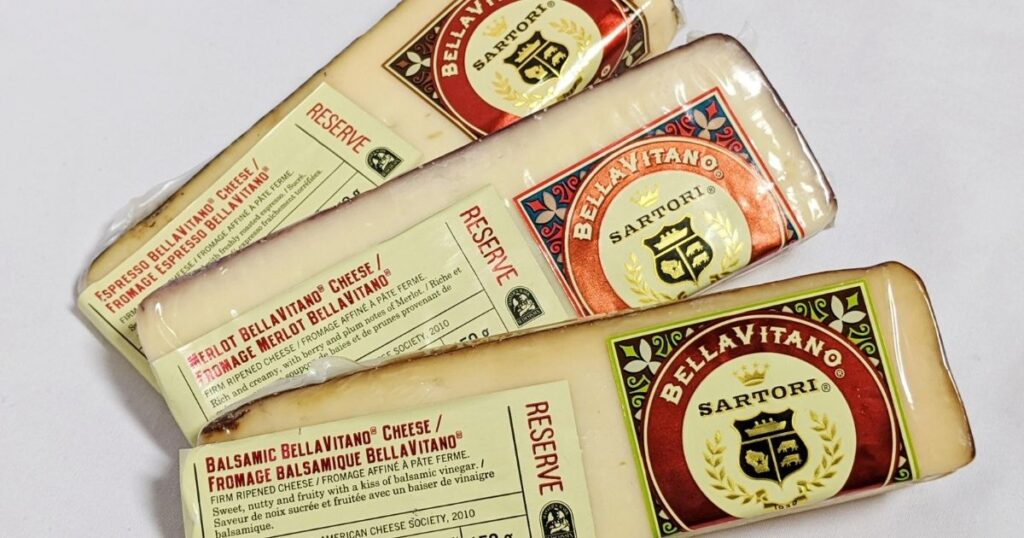
Also headquartered in Plymouth, Sartori has seamlessly blended traditional cheesemaking techniques with modern innovation. With roots dating back to 1939, Sartori is renowned for its premium, handcrafted cheeses.
Today, they specialise in aged varieties, including their award-winning Parmesan and BellaVitano lines, which have gained international acclaim.
Sartori’s master cheesemakers meticulously oversee the ageing process, creating cheeses with rich flavours and unique profiles. Their dedication to quality has made Sartori a beloved brand not only in Wisconsin but also among cheese connoisseurs worldwide.
Together, Sargento, BelGioioso and Sartori represent the pinnacle of Wisconsin’s cheesemaking heritage. Through their unwavering commitment to craftsmanship, innovation and exceptional flavours, they have become ambassadors of the state’s cheese industry.
A new wave of artisanal cheesemakers in America’s Dairyland
Beyond the large-scale commercial cheesemakers, Wisconsin is also home to a thriving artisanal cheese industry. These artisanal cheesemakers exemplify the state’s dedication to quality, flavour and innovation.
Let’s delve into the stories of three remarkable artisanal cheese producers.
Uplands Cheese Company
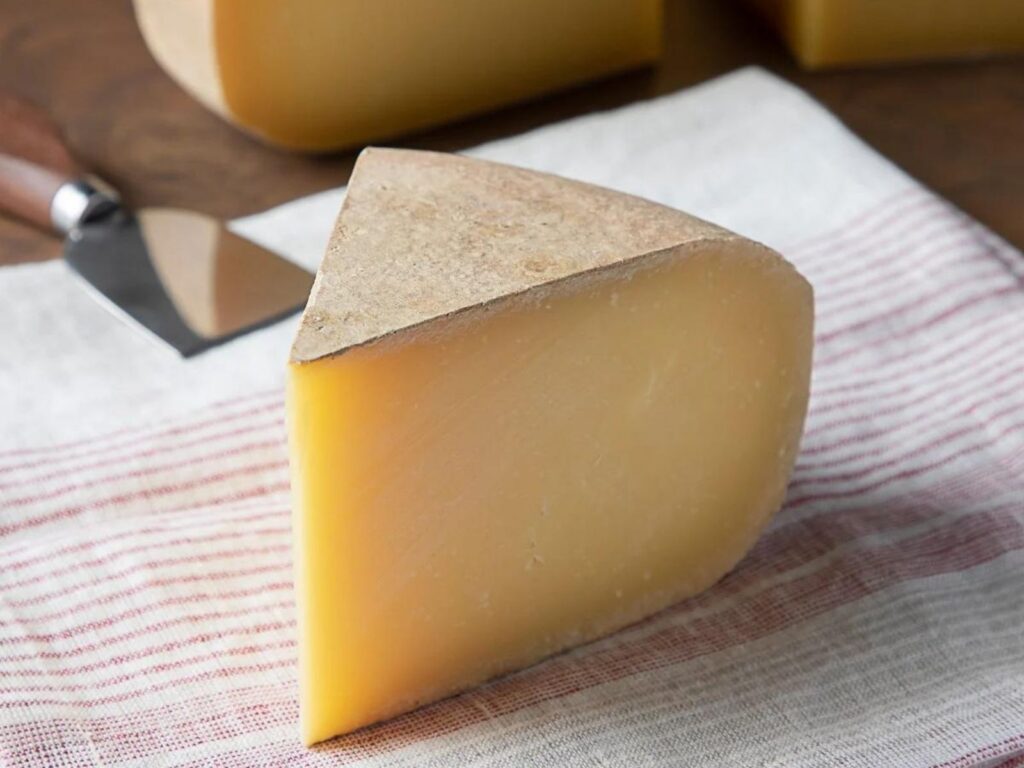
Nestled in the picturesque Driftless Region of Wisconsin, the Uplands Cheese Company is a beacon of artisanal cheesemaking. Founded by Andy Hatch, Uplands is best known for Pleasant Ridge Reserve, an award-winning cheese that has claimed the title of Best in Show at the American Cheese Society Competition multiple times.
This raw cow’s milk cheese is a true reflection of the terroir, showcasing the unique flavours of the lush Wisconsin pastures. Uplands practices rotational grazing, allowing their cows to graze on diverse grasses, herbs and wildflowers.
The end result is a cheese that captures the essence of the local landscape as it changes with the reasons. As well as their award-winning Pleasant Ridge Reserve, Uplands Cheese also make a delightful raw milk bark-wrapped cheese called Rush Creek Reserve.
Roelli Cheese Haus

Located in Shullsburg, Roelli Cheese Haus is a beacon of innovation in the state’s artisanal cheese scene. Master Cheesemaker Chris Roelli continues his family’s legacy, producing a variety of unique and flavourful cheeses.
Roelli specialises in American hybrid cheeses and two of their most iconic offerings are Dunbarton Blue and Red Rock Cheese. The former is a Cheddar-Blue hybrid and the latter an annatto-infused version of the former.
Certainly, their inventive approach to traditional cheese styles has put them on the map as a leader in Wisconsin’s artisanal cheese renaissance.
Carr Valley Cheese
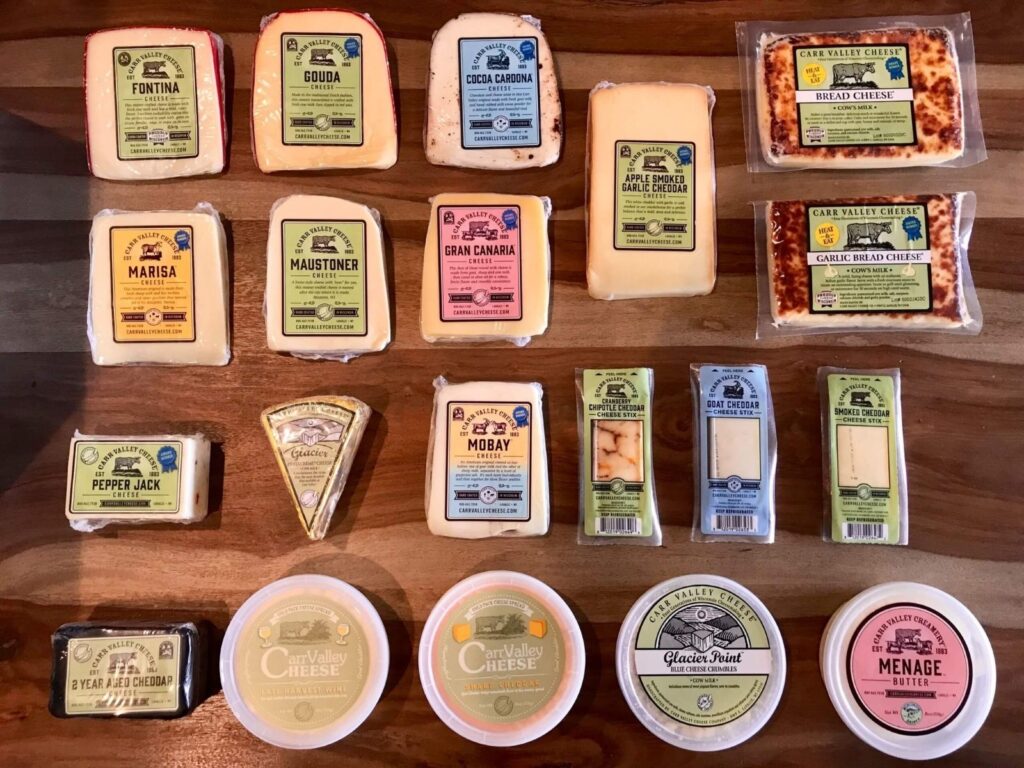
In the heart of Wisconsin, Carr Valley Cheese stands as a testament to generational expertise in cheesemaking. Founded in 1902, Carr Valley is one of the state’s oldest family-owned cheese companies.
Master Cheesemaker Sid Cook leads the charge, producing an eclectic array of cheeses, from classic Cheddars to inventive, smoked and flavoured varieties. Carr Valley has garnered numerous awards for their artisanal creations, reflecting their commitment to quality and innovation.
Overall, these artisanal cheesemakers epitomise the essence of Wisconsin’s small-batch cheesemaking. Their dedication to preserving tradition while pushing the boundaries of flavour has solidified their place in the pantheon of artisanal excellence.
Conclusion
In the heartland of America’s Dairyland, where emerald pastures meet skilled hands, a symphony of cheesemaking unfolds. Wisconsin, with its rolling hills and passionate cheese artisans, has woven a tale of flavour, tradition and innovation that resonates far beyond its borders.
From the pioneering spirit of the early settlers to the artisanal ingenuity of today’s cheesemakers, Wisconsin’s cheesemaking journey is a testament to the enduring love affair between its people and the land. The state’s rich terroir, characterised by fertile soil and contented cows, gives birth to cheeses that reflect the very essence of the Wisconsin landscape.
In every wheel of Cheddar, every delicate curd, and every crumbly blue, there’s a story. It’s a story of generations, of families passing down time-honoured techniques, and of communities rallying around the craft that defines them. It’s a story of innovation, where traditional methods meet cutting-edge ideas, resulting in cheeses that surprise and delight the senses.
As you discover the diverse textures and flavours of Wisconsin’s cheeses, you’re not just tasting cheese; you’re savouring a legacy. Each bite encapsulates the spirit of a state that takes immense pride in its cheesemaking heritage.
Are you as passionate as we are about Wisconsin cheese? We’d love to hear from you in the comments section below.


